Together, Piestewa Peak and Camelback Mountain define the natural skyline of Phoenix. They offer city residents a nearby sojourn into the desert or an athletic hiking experience. The desert encounter is not perfect of course. There are often crowds of people all seeking solitude. And one is never really far enough from roads and other city noises to find complete solitude. Not withstanding, many desert plants and creatures eke out a living here and provide opportunities to observe amazing desert ecology and survival.
There are two entry points to this recreation area. The parking at the Echo Canyon trail head is limited - so much so that if the weather is nice the lot will be full with more waiting to park. The drive into Echo Canyon is just east of 44th Street and Tatum. To access the mountain from the east there is limited parking along Invergorden for the access to the Cholla Trail. Access by driving ½ mile north from Camelback Road on 68th Street.
Beyond the first ¼ mile the hike up Camelback becomes physically demanding and potentially hazardous. The slope is quite steep in spots (there are hand rails and chains to steady your ascent) and the hundreds of trampling shoes have produced a fine coating of slippery, pulverized rock. Many hikers are very fit and use the trail for fitness training.
The geology of Camelback is entirely different than nearby Piestewa Peak (formerly Squaw Peak). The northwestern portion is reveals a cap of sedimentary rock. An aggregate of stones and smaller gravel is cemented together with an appealing rust colored silt stone. The rock is rather soft which has allowed for the formation of wind caves and grottos. Moisture is readily absorbed by this material and released slowly allowing for a surprisingly diverse flora. The eastern half as well as the highest summit is a core of Cenozoic or Tertiary, course-grained granite.
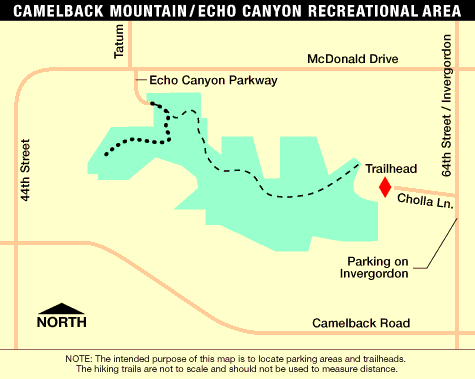
Adapted from Phoenix Parks & Rec. Map.
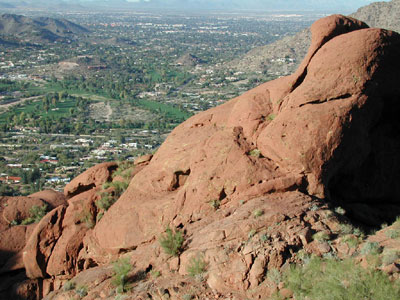
The colorful sedimentary rock of Camelback Mountain makes for an easily recognizable landmark whether driving through or flying above Phoenix, Arizona.
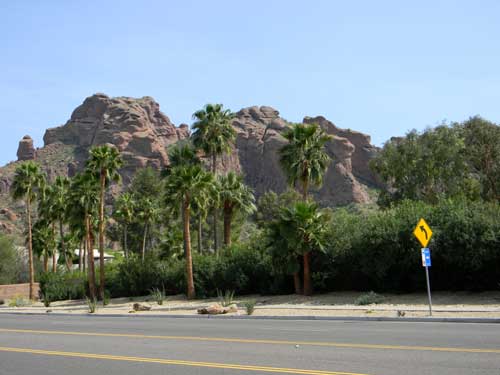
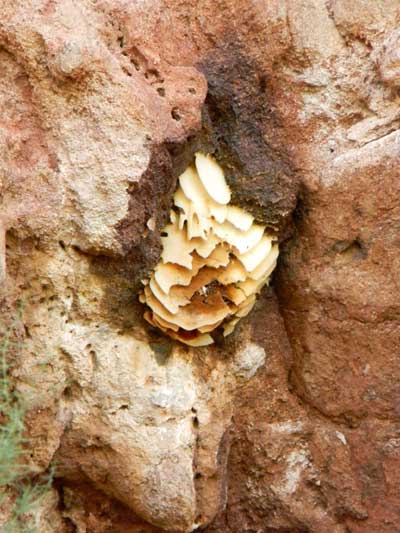

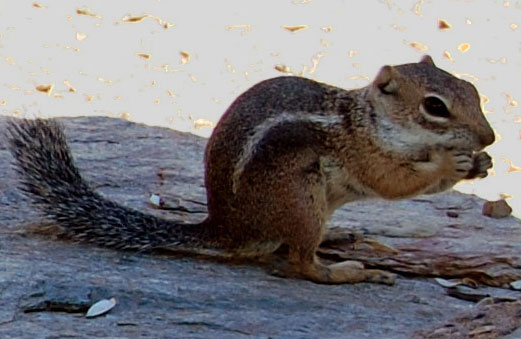
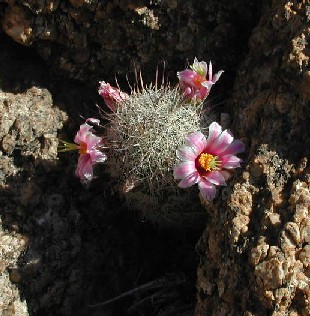
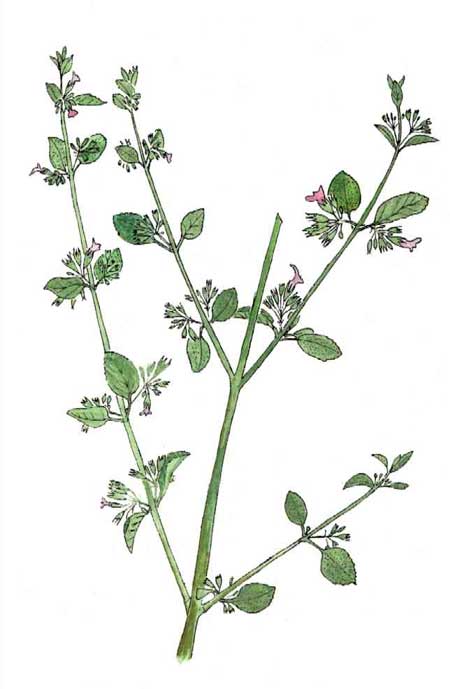
 : usually no or very few blooms open
: usually no or very few blooms open : a few scattered blooms likely to be seen
: a few scattered blooms likely to be seen : quite a few blooms likely to be seen, depending on past rainfall
: quite a few blooms likely to be seen, depending on past rainfall : abundant blooms dependent on favorable rainfall
: abundant blooms dependent on favorable rainfall







